MUSCAT, November 27 and 28, 2022
ACCOMODATION
Naseem Hotel, 102 Eu for 2 nights for a double room with sea view, breakfast included. Very nice hotel, nice room with 3 windows, two of which face the sea. Muttrah is definitely the best earea of the capital where to stay, the only one nice and pedestrian-friendly. There aren’t many hotels, the only ones are the Naseem, the Marina, about 100 meters away, still facing the sea, and then the Fort Guesthouse which however does not overlook the Corniche. The Naseem Hotel is a short walk from the Souq and the fish market. In the night photos it is the one coloured in white red and green.
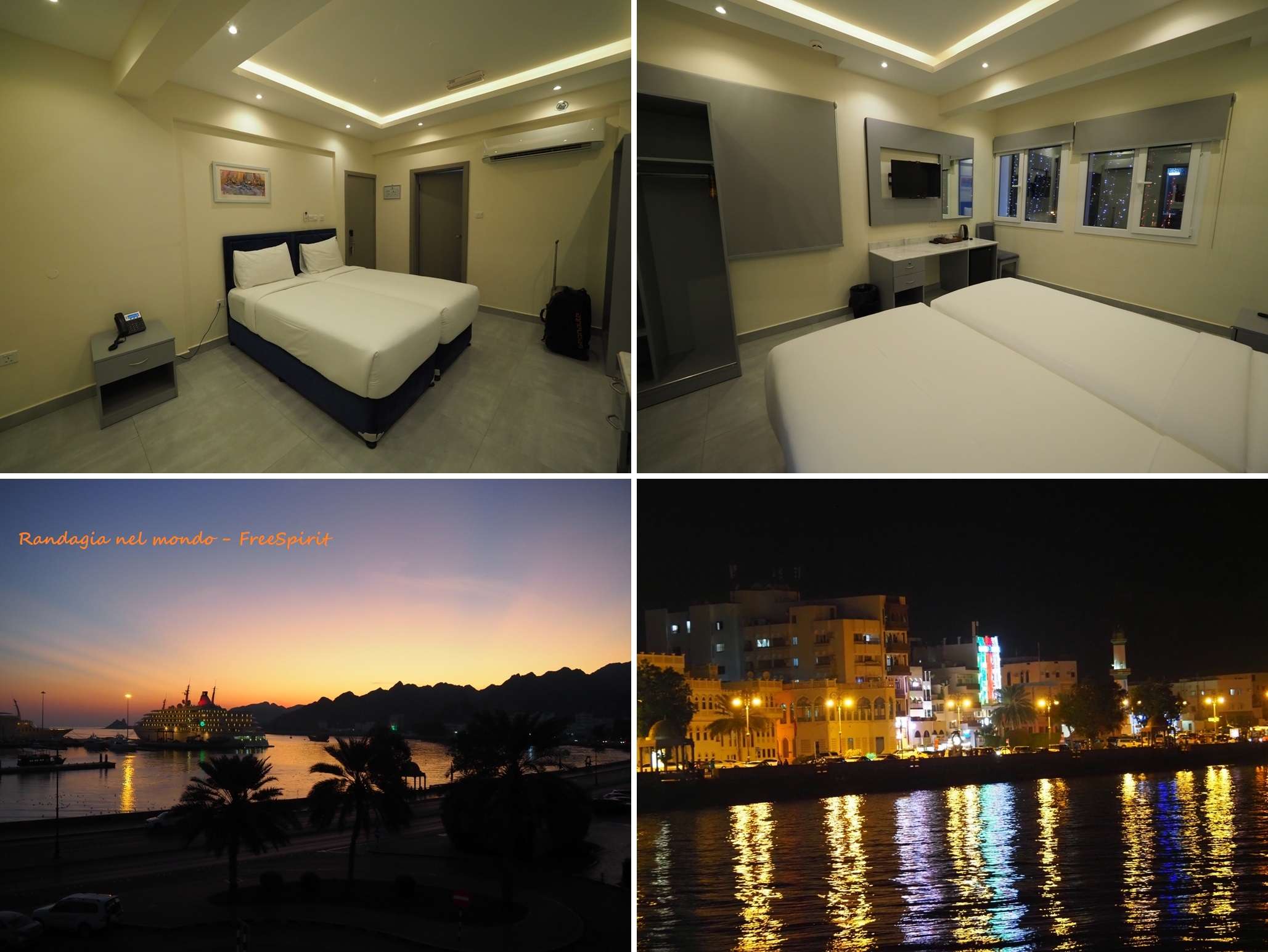
With a short walk you can reach the Fort, and going further on you arrive at the old city, where the royal palace is located. Lots of cheaper hotels can be found in Ruwi, which is about 3 or 4 km far away, but it is not a pleasant area to walk around. However, you can go there by bus. In Ruwi there is a transport hub, with urban line n. 4 which connects it to Mutrah, and other lines that reach other points of the city, including the airport.
Before my travelmate arrived, when I was alone, I intentionally decided to sleep in other areas of the city.
Remas hotel, 57 Eu for a single. My flight landed at 7.20 pm; the following morning I had to leave early, so I chose the only hotel close enough to the airport that had a free pick up. A driver then picked me up from the car park to the hotel, and took me back to the shared taxi station on the next day. It is located on a highway, in an area that is very unsuitable for walking. Very well soundproofed. Breakfast is available with a small extra cost. They gave me an entire apartment. Furnishings are not very modern, but for the price I paid it’s more than okay. In the evening they offered me a snack, I think it was a take away from a nearby restaurant, really good. Very kind staff, they even sent me Christmas greetings. Truly recommendable.
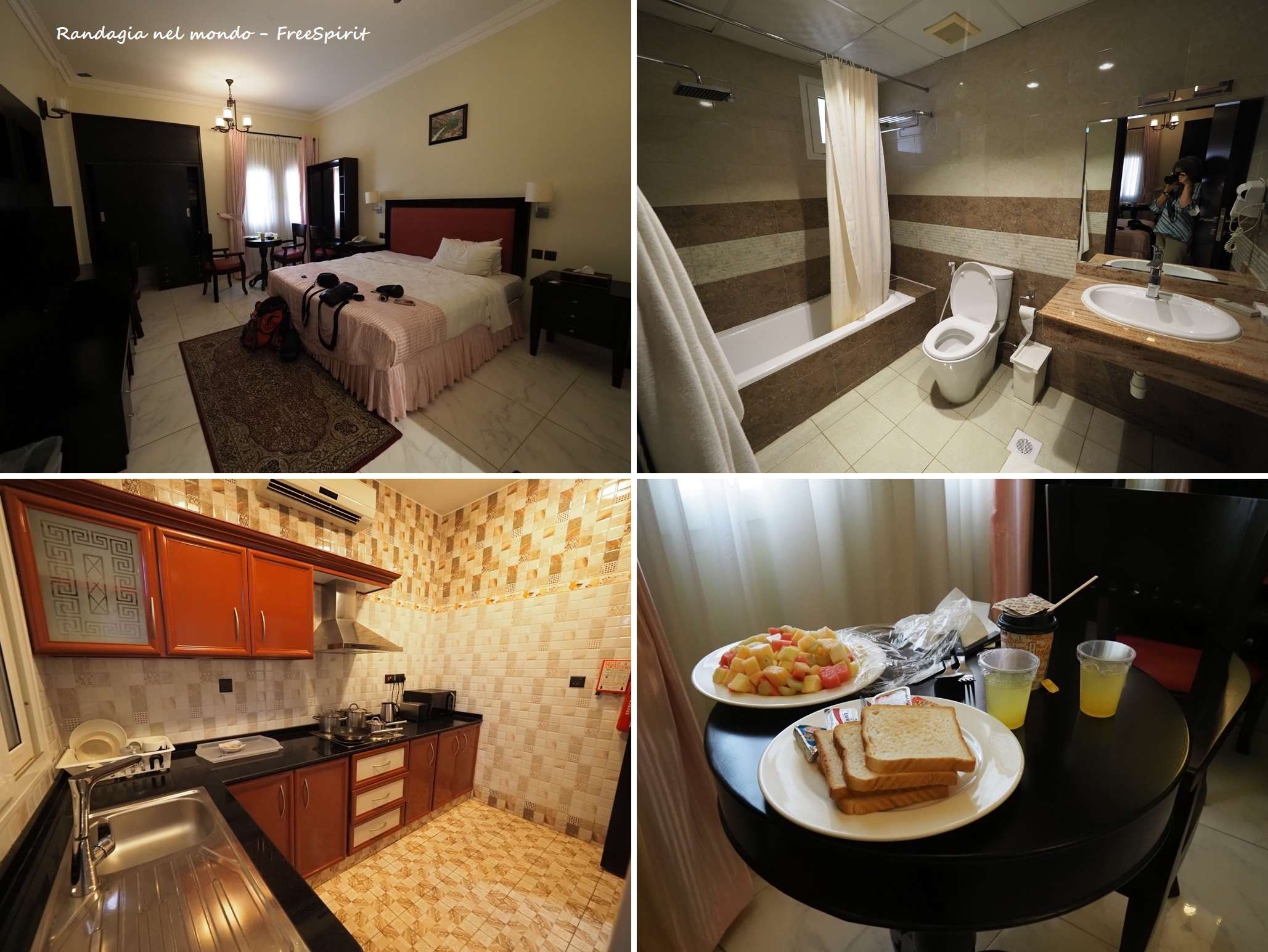
City Center Hotel, 94 Eu for a single room for two nights. When back from the trip to Wahiba Sands, I did not return to the Remas because it was far from the Mwasalat bus stops. I therefore opted for the City Center, near Carrefour (so very practical to get some cheap food), the airport and the Al Mouj pier (the bus stops is almost exactly in front of the hotel). This one also overlooks the ring road, perhaps not as well soundproofed as the Remas, but I still slept very well. I was very happy to notice that even for a short stay they made up my room and changed towels.
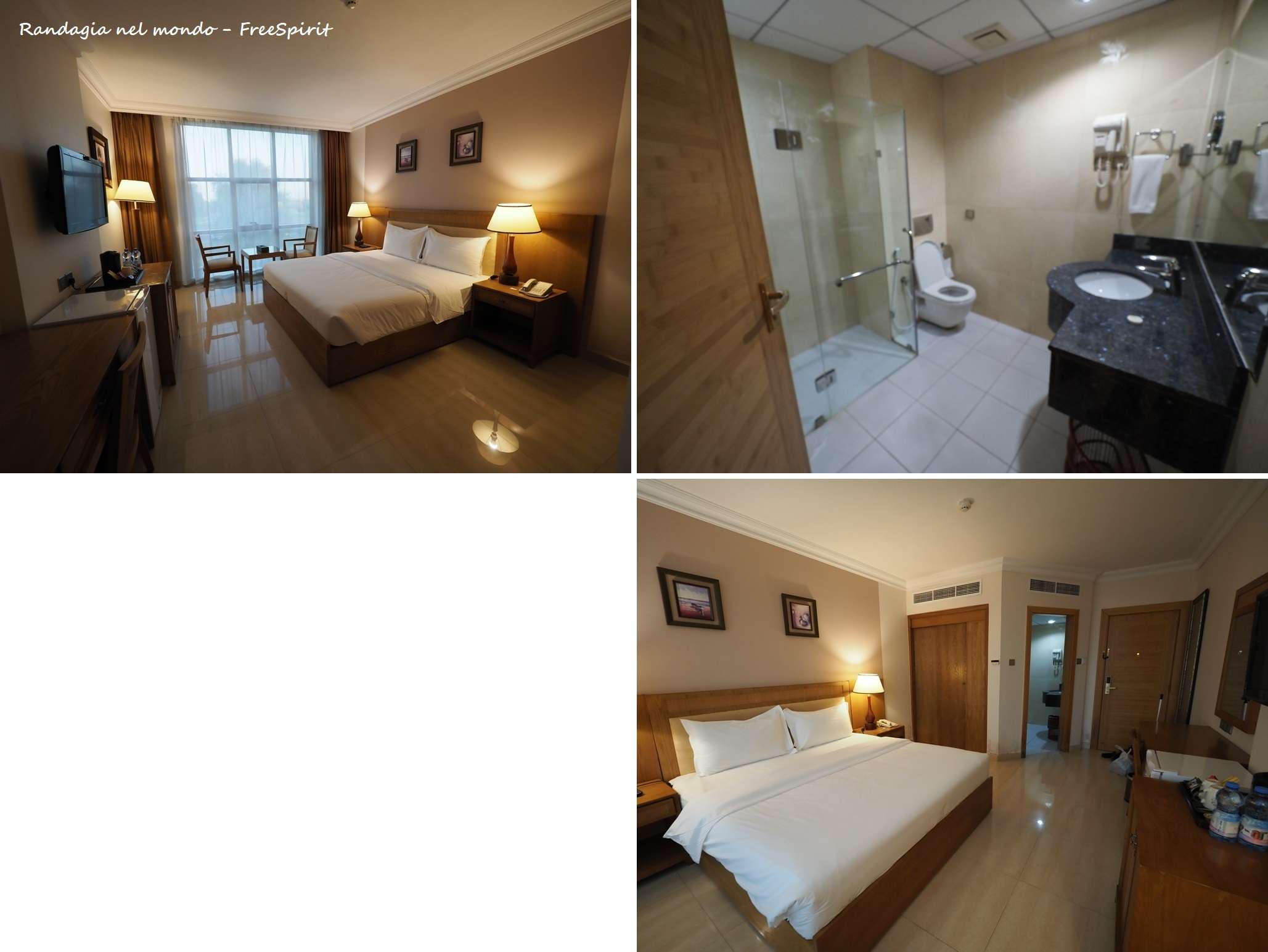
Apart from Carrefour, which is 20 meters away from the hotel, there are also some restaurants and coffee shops within a very short walk. In Carrefour, in addition to a large shopping arcade, there is also a food court, where I ate on the second evening. Many people, and I agree with them, have written on various socials it is difficult to spot Omani women walking in the streets. Well, they’re all at Carrefour!! Really a popular meeting place for families, girls and ladies. The supermarket is huge. You can also find Italian products.
SULTAN QABOOS MOSQUE
This was our priority, due to its somewhat limited visiting hours (for non-Muslims from 8 to 11). We reached it by car without problems with Google Maps, parking is free, and so is the entrance. It is not a historic building, but rather an example of modern Islamic architecture, having been inaugurated on 4 May 2001 to celebrate the 30 years of the sultan’s reign. It can welcome 20 thousand faithfuls.
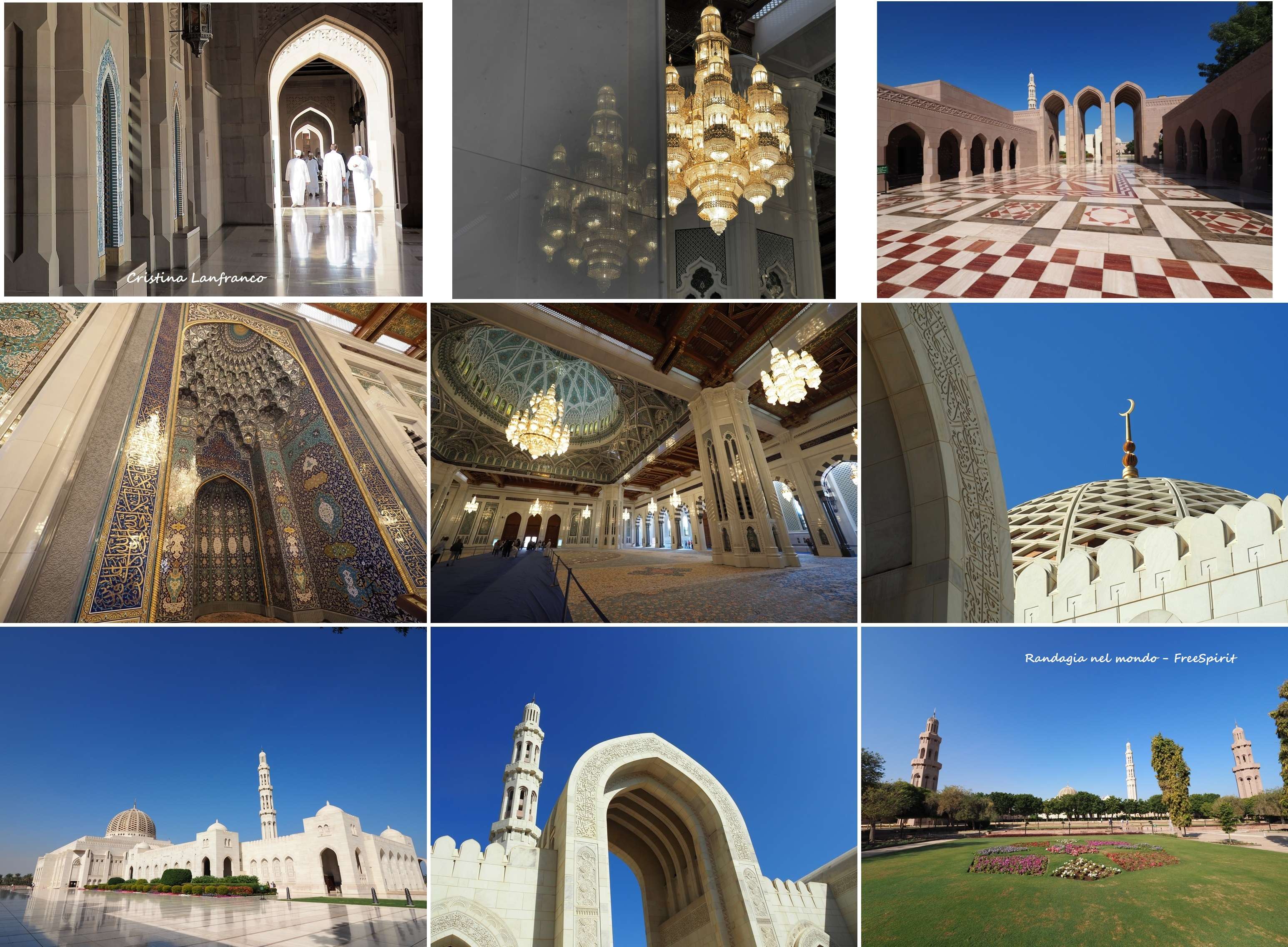
It is renowned for the carpet and chandelier in the main hall, which were the largest in the world before another mosque in Abu Dhabi took over the record. The dimensions of the carpet are 70×60 mts, 600 women spent 4 years weaving it, writes Lonely Planet, for a total number of almost 1700 million knots. 28 different colours of vegetal origin compose it. Its patterns is similar to the ceiling one. The central chandelier is 14 meters high, composed of Swarovski crystals, approximately 600 thousand, 1122 light bulbs, and weighs 8 tons.

When entering the main room, the scenery at first sight is exceptional, I was struck by the decorations on the walls, the white Carrara marble alternates with magnificent mosaics in the shades of blue and turquoise.
Short trousers are prohibited, even for men, and women must also have arms and heads covered. There is a bit of a confusion at the entrance because many tourist are surprised to be obliged to wear additional clothing, or are unprepared to do this. It is mandatory to remove shoes when entering the prayer rooms, they can be put in the shelves outside. It is not compulsory to wear shoes in the corridors adjacent the rooms. The Mosque also houses an Islamic culture center. Near the toilets, in a small shaded garden, there are volunteers who approach foreigners, offering tea and dates: they provide some books and brochures on the Islamic religion, and are available for cultural and religious conversations. My traveling companion and I found this experience very useful, it was perhaps for us the only moment in which we were able to truly relate to and get to know someone local. I recommend everyone to stop here. Sultan Qaboos, much loved by Omanis, guided the country towards modernity, while maintaining respect for traditions, and taught tolerance towards diversity.
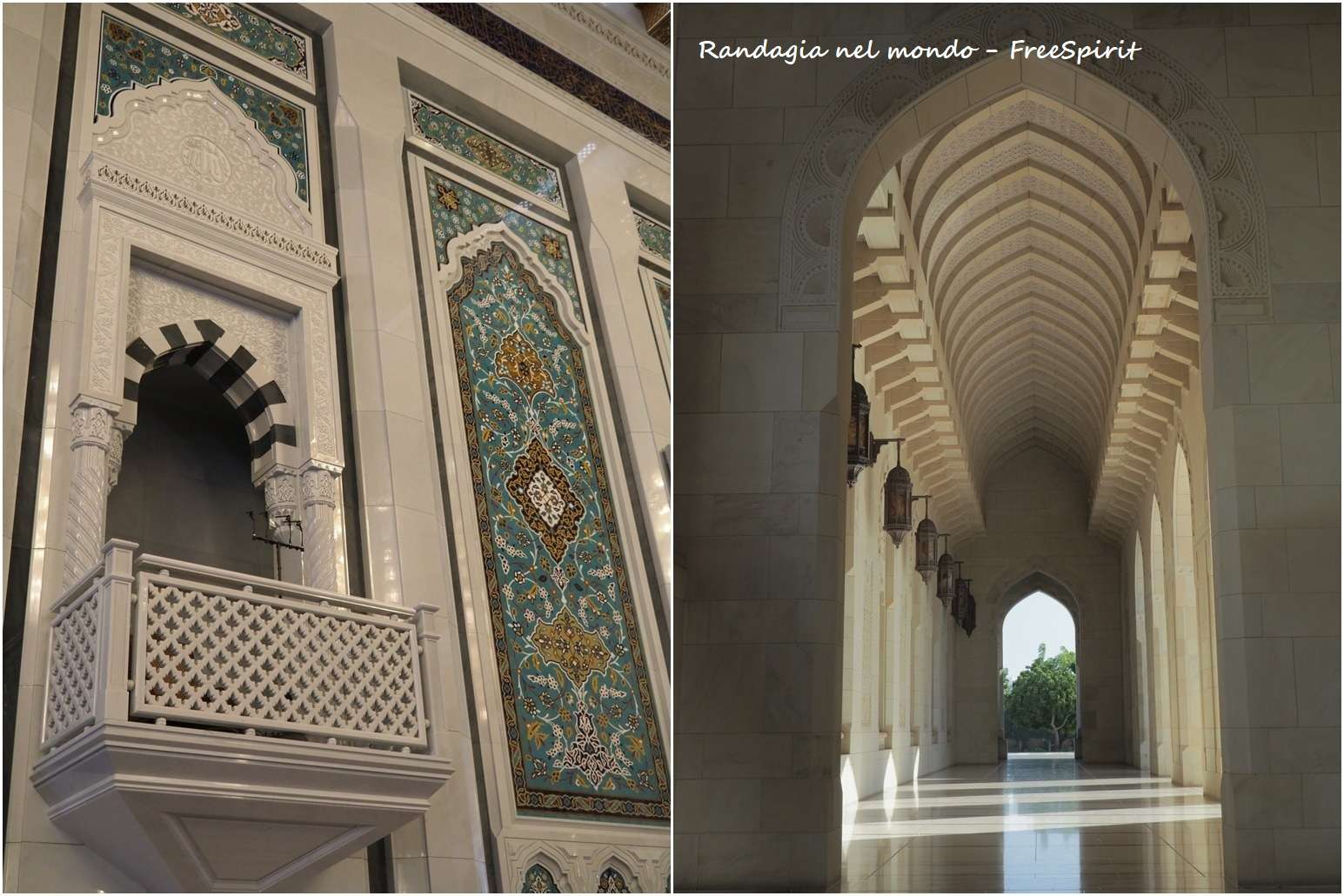
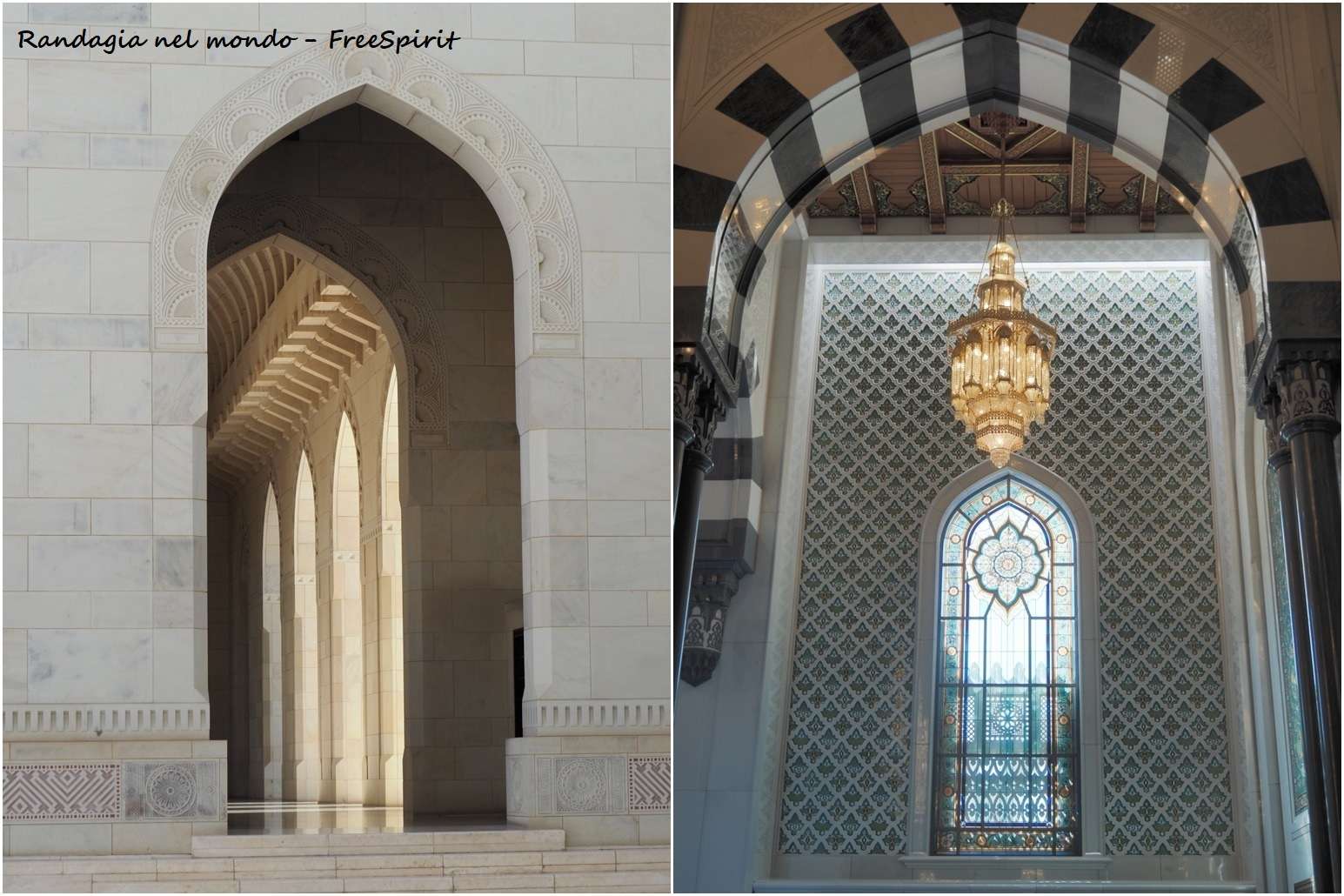
MUTTRAH – Corniche
I can’t imagine anywhere else to stay in Muscat. It’s a postcards of this place, seen years ago, which made me want to travel to this country: the only capital of the Arabian peninsula without skyscrapers, white buildings no more than 4 floors high, overlooking a port, in a bay surrounded from limestone mountains.
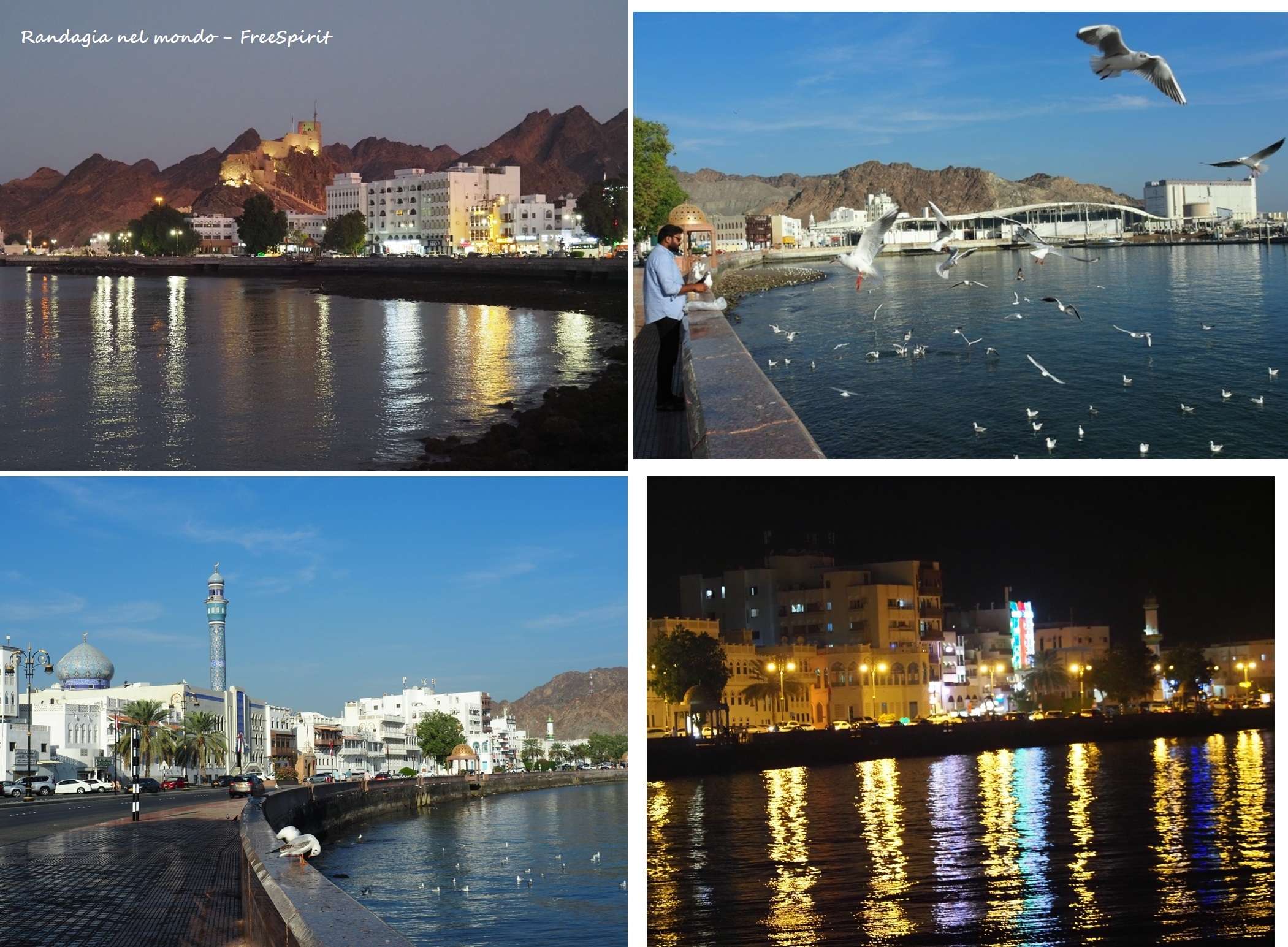
The walk from the Fish Market to Al Alam Palace, Old Muscat, is approximately 4km. Spectacular at sunset, and in the early morning, when the warm light of dawn irradiates frontally the white buildings.
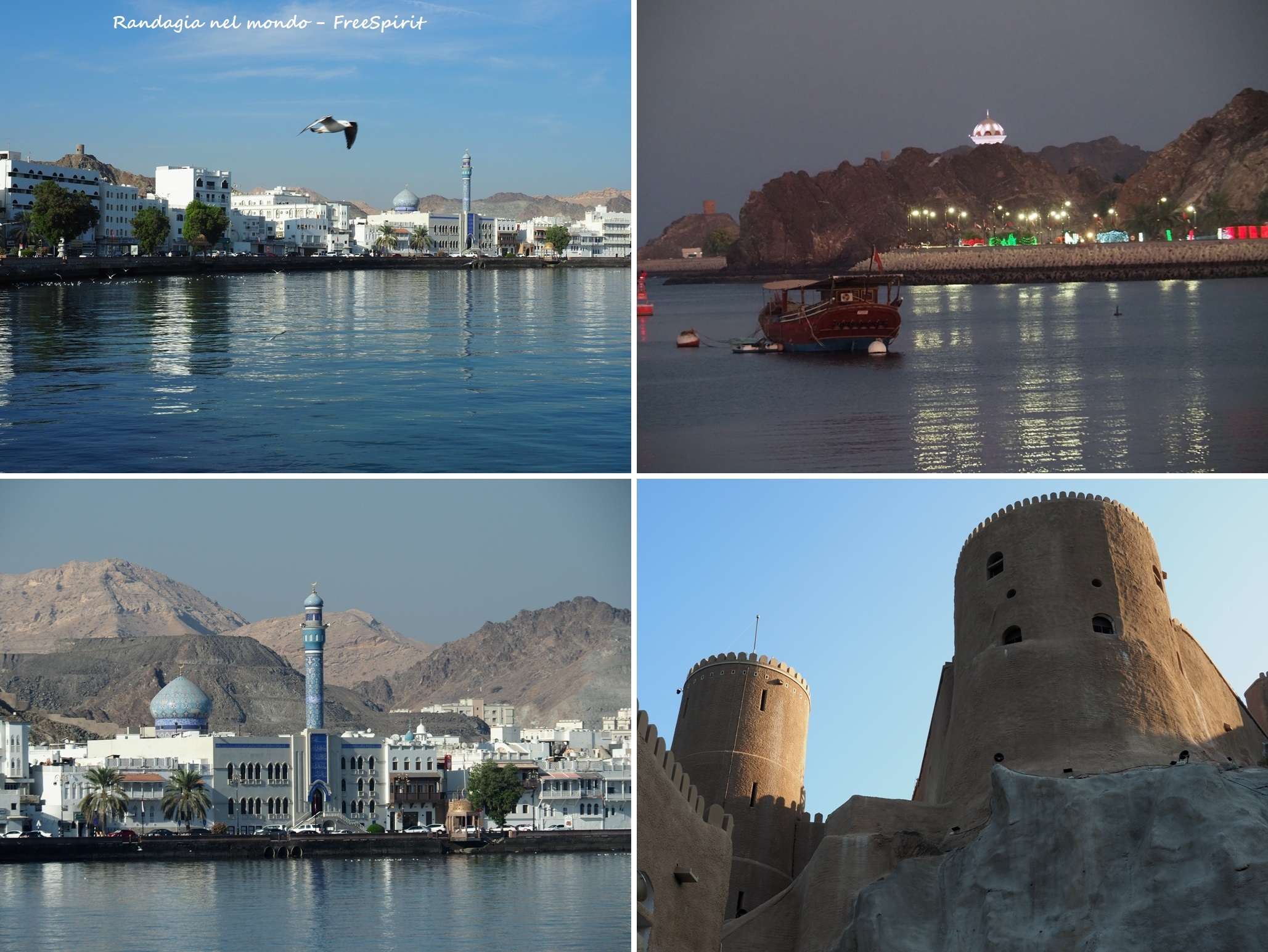

ROYAL OPERA HOUSE
Entrance with guided tour 3.8 OMR. Free parking. Built in 2011, at the behest of Sultan Qaboos, a great lover of art and classical music, it blends Islamic and Italian architectural elements.
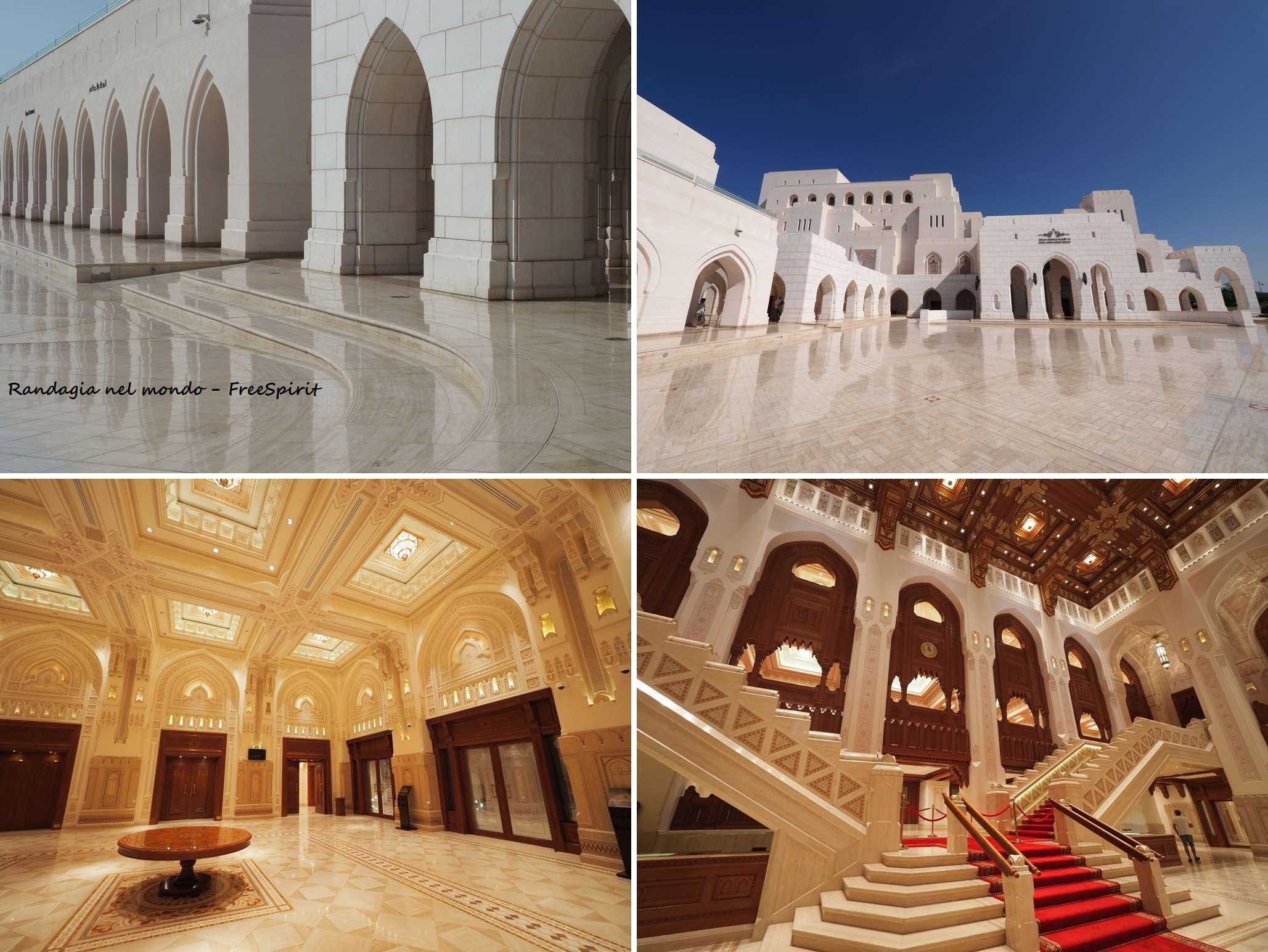

It is equipped with highly advanced automatic systems which allow the first rows of spectators to be raised and lowered when necessary to make extra room for the orchestra, and similarly, to move the sets in relation to the amount of stage that is necessary for the performances. On the backrests there are small video terminals where it is possible to read the texts and translation of the performances.
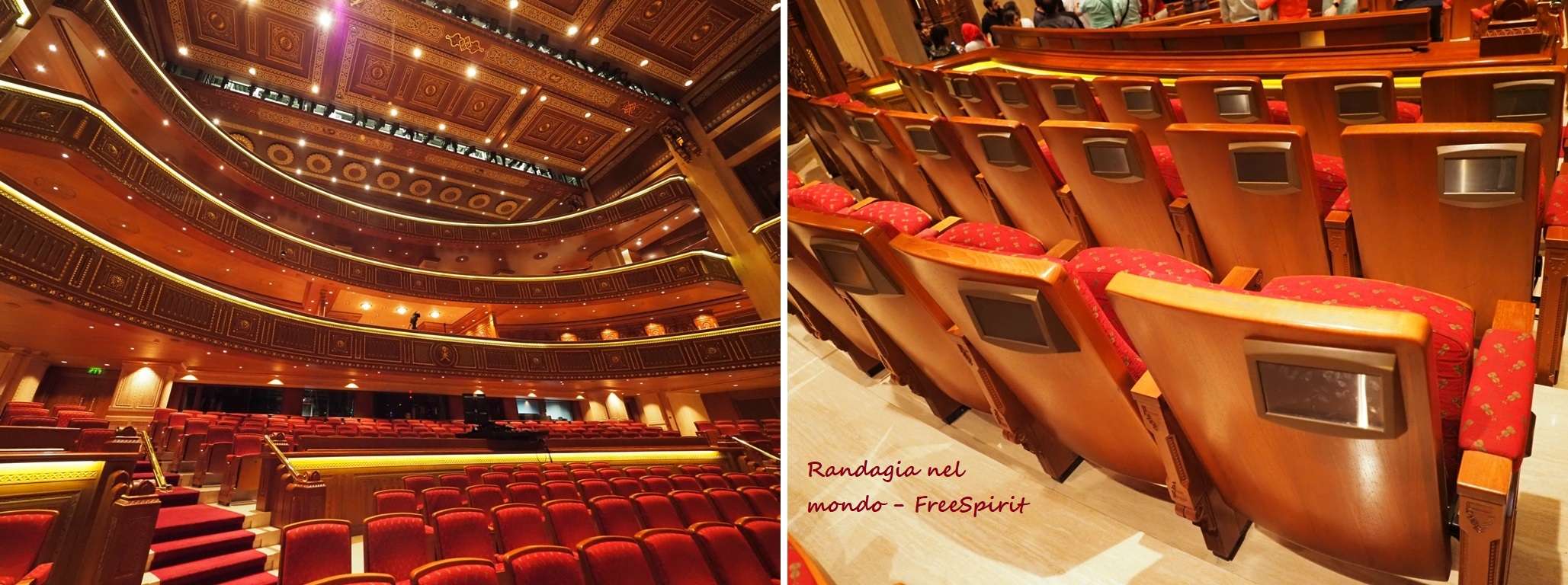
Some very rare musical instruments belonging to the sultan’s private collection are showed in display cases. The most famous international artists perform here. The complex includes a theater, an auditorium, an artistic production center, and a luxury shopping arcade, with scary prices
QURUM
Not far away is Qurum Beach, which, after Muttrah, is in my opinion the nicest and pedestrian-friendly neighborhood in Muscat. Here there is a beach very popular with locals, a beautiful seafront, and boutiques and affordable shopping centers, and several bars, restaurants and cafes. It almost feels like being in any tourist town in the Mediterranean. Rugged limestone mountains, like everywhere in the city, frame the landscape.
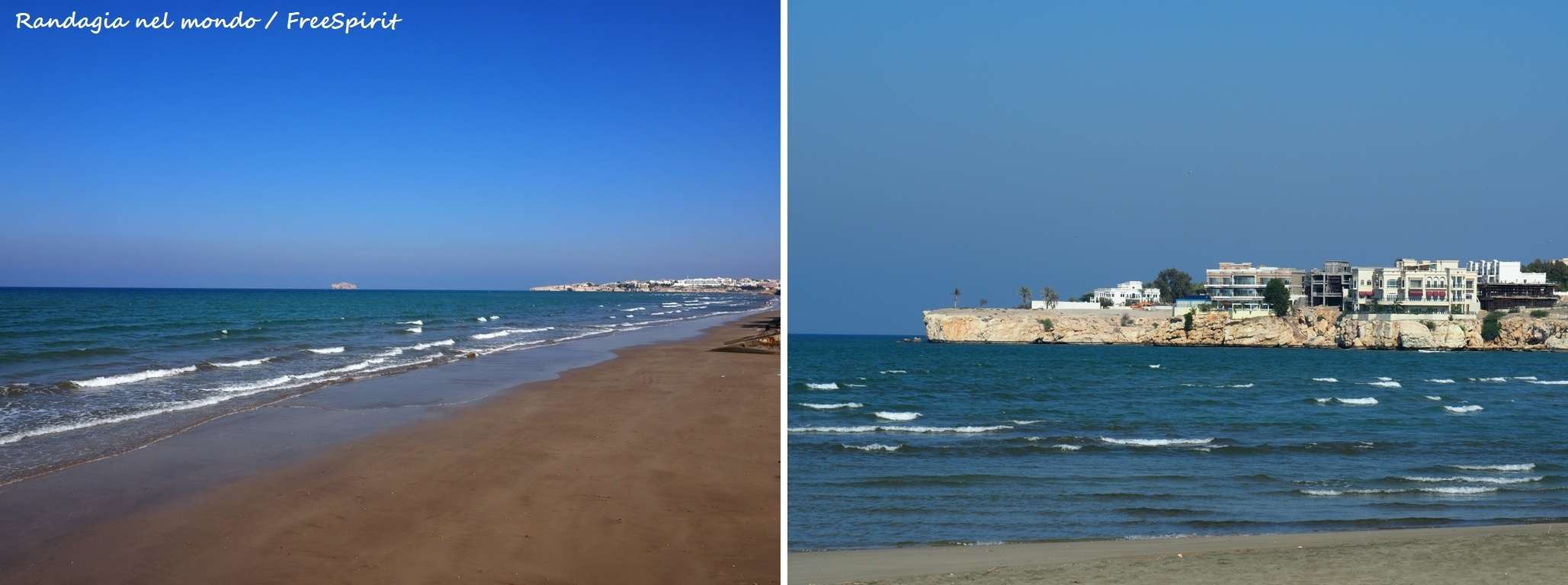
FISH MARKET
Right in front of our hotel. From what I read, it is a very recent construction of high architectural quality, commissioned by the municipality to replace the existing building, which suffered from numerous problems related preserving fish because of the heat. In addition to the aesthetic side, therefore, the builders also tried to satisfy some practical requirements. Refrigeration systems have been created that allow the pumping of chilled water. The surface area has also been significantly expanded, and also houses an adjacent food market and a café. If visiting it very early in the morning, around 6.30, it is possible to see the fishermen come back from the sea with the catch of the day. The most eye-catching feature is the canopy which goes across the public walkways outside the market, inspired by Arabic calligraphy. The curved structure of some walls follows the line of the corniche and the bay area.
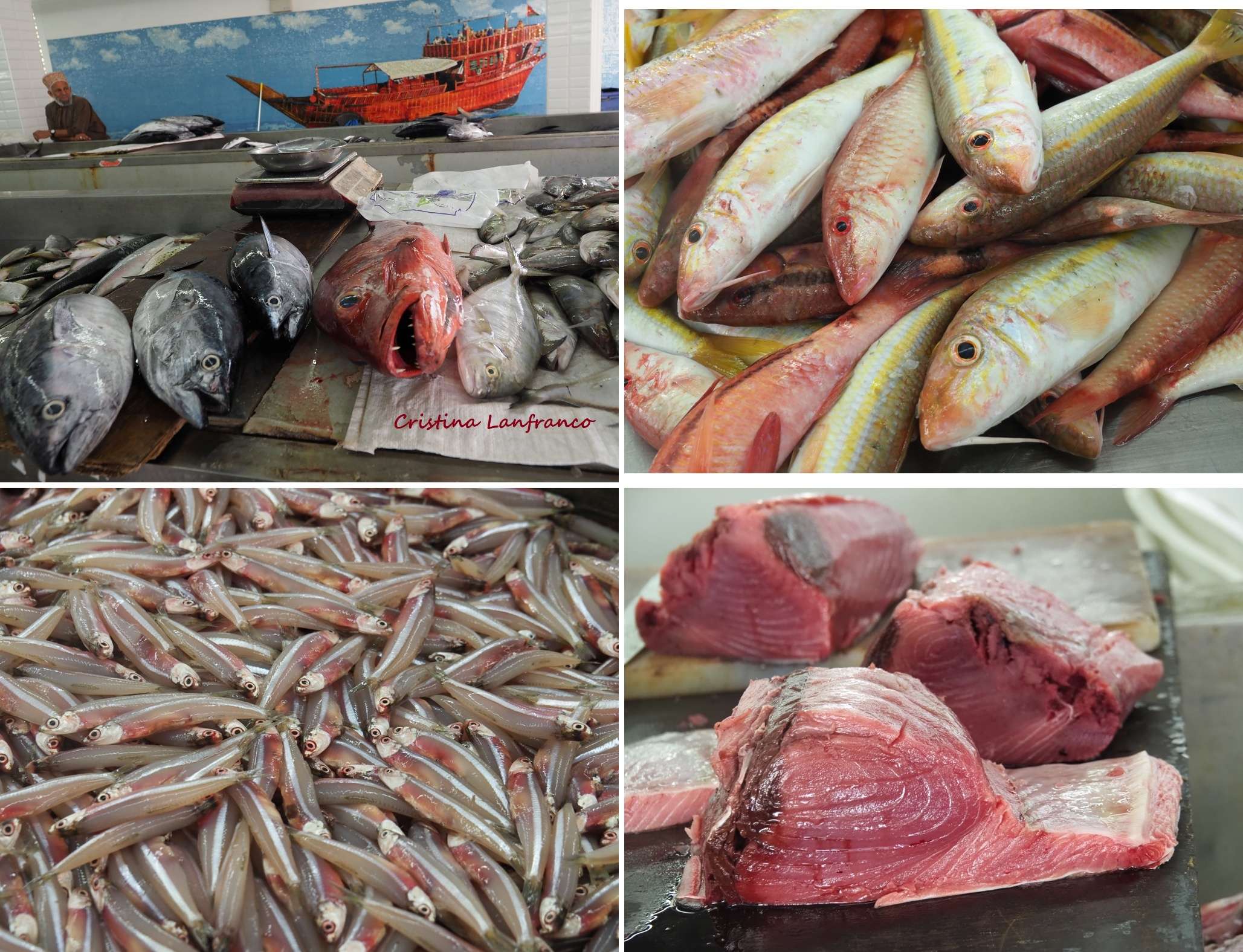
SOUQ
On the Corniche, a few minutes from our hotel. I have read contrary opinions, both on the quality of the goods and on the attitudes of the salesmen, which are both Indian. The most of the items, especially the cheaper ones, pashminas and silver, are the same which could be found in Delhi or Udaipur, at higher prices. Bargain to death, trying to get at least half of the proposed price. The managers/clerks are insistent, but nothing special, and always kind; never as aggressive as in Egypt, where they literally try to “throw you into” the shops, or at the Ben Than market in Saigon, where they grab you by the shirt to attract your attention. I admit I spent a lot of money there. Since I had free checked in baggage, I took the opportunity to buy some Christmas presents. Typically Omani gifts are incense, perfumes, khanjars (traditional and decorated daggers). I also found some soaps made with camel’s milk. Furthermore, very pretty (and very heavy to carry) padlocks in the shape of a camel and turtle, made of brass or similar material, embellished with colored stones.
AL ALAM PALACE
The walk from the Fish Market in Muttrah along the Corniche to Al Alam Palace is 5 km, passing through Old Muscat, it is one of the highlights of the city. The Palace, one of six owned by the sultan, cannot be visited, but can still be admired from the square in front, over which the fortresses of Al Mirani and Al Jalali, built by the Portuguese, stand out.
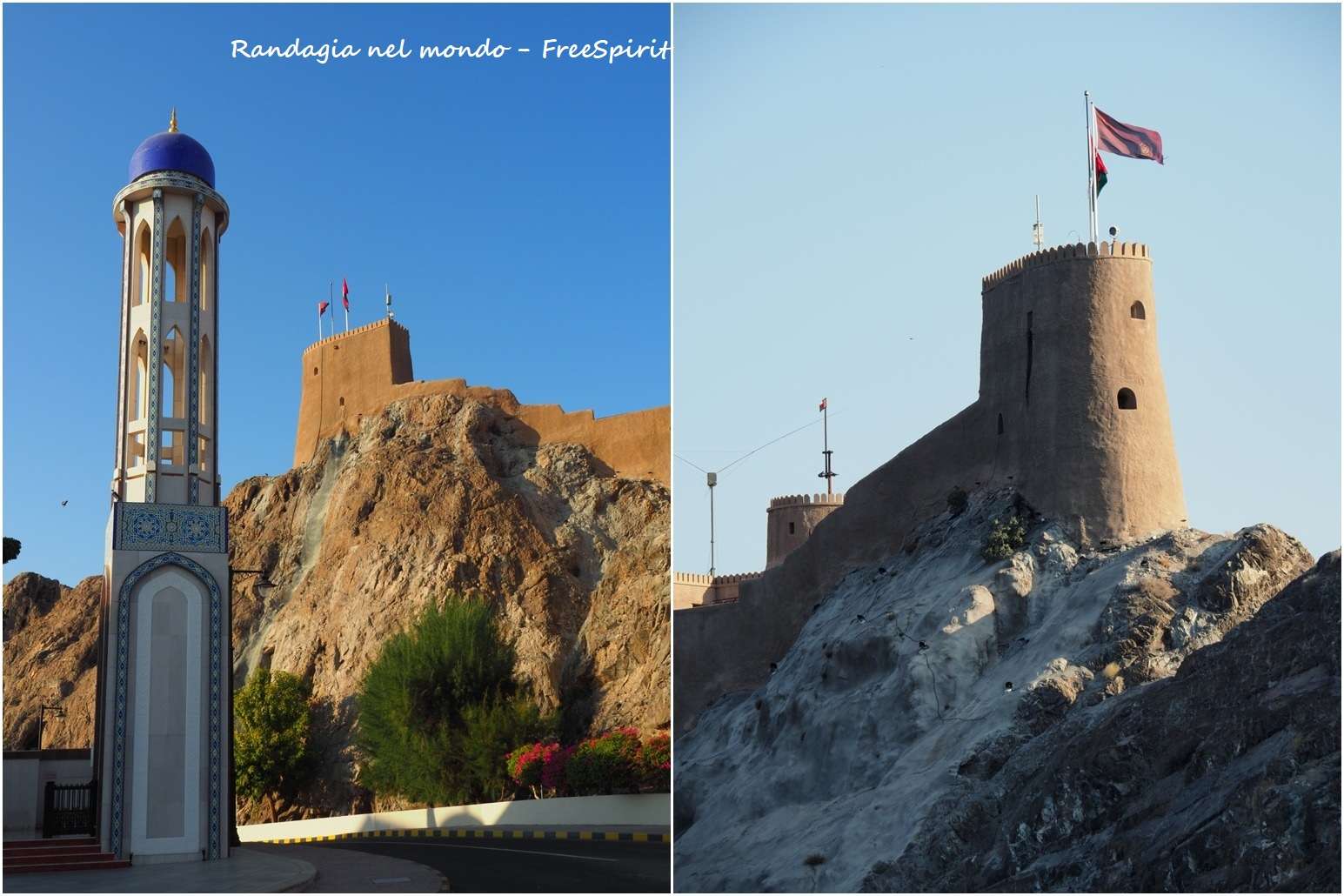
It is mainly used to receive important guests on official occasions. It was built about 200 years ago, and modernized in 1972. The marble pavements of the square are constantly polished by the dedicated staff. They are so clean you could eat on them. Many people, both tourists and locals, come here, as it is one of the few places where you can take a walk, admiring the seafront.
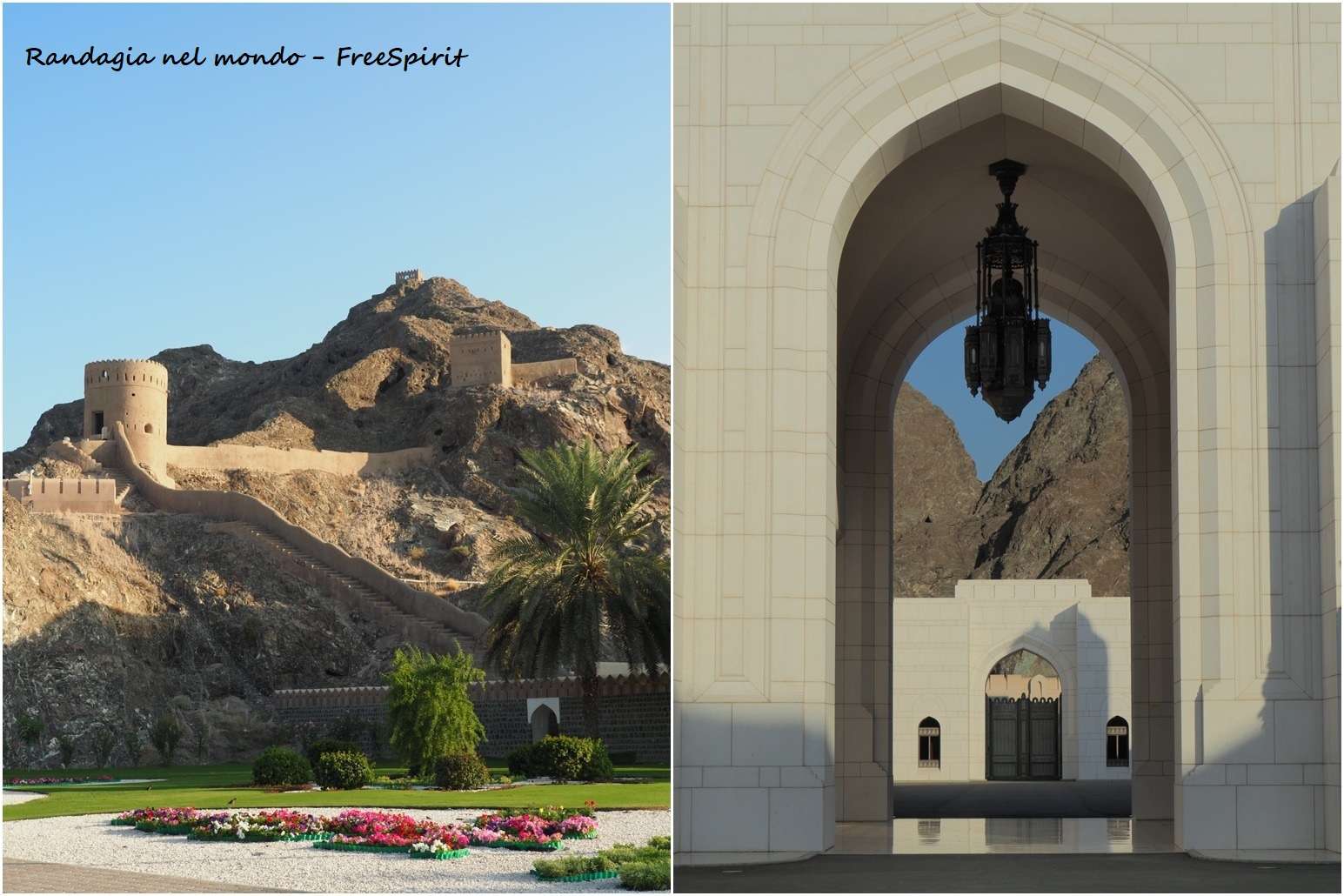
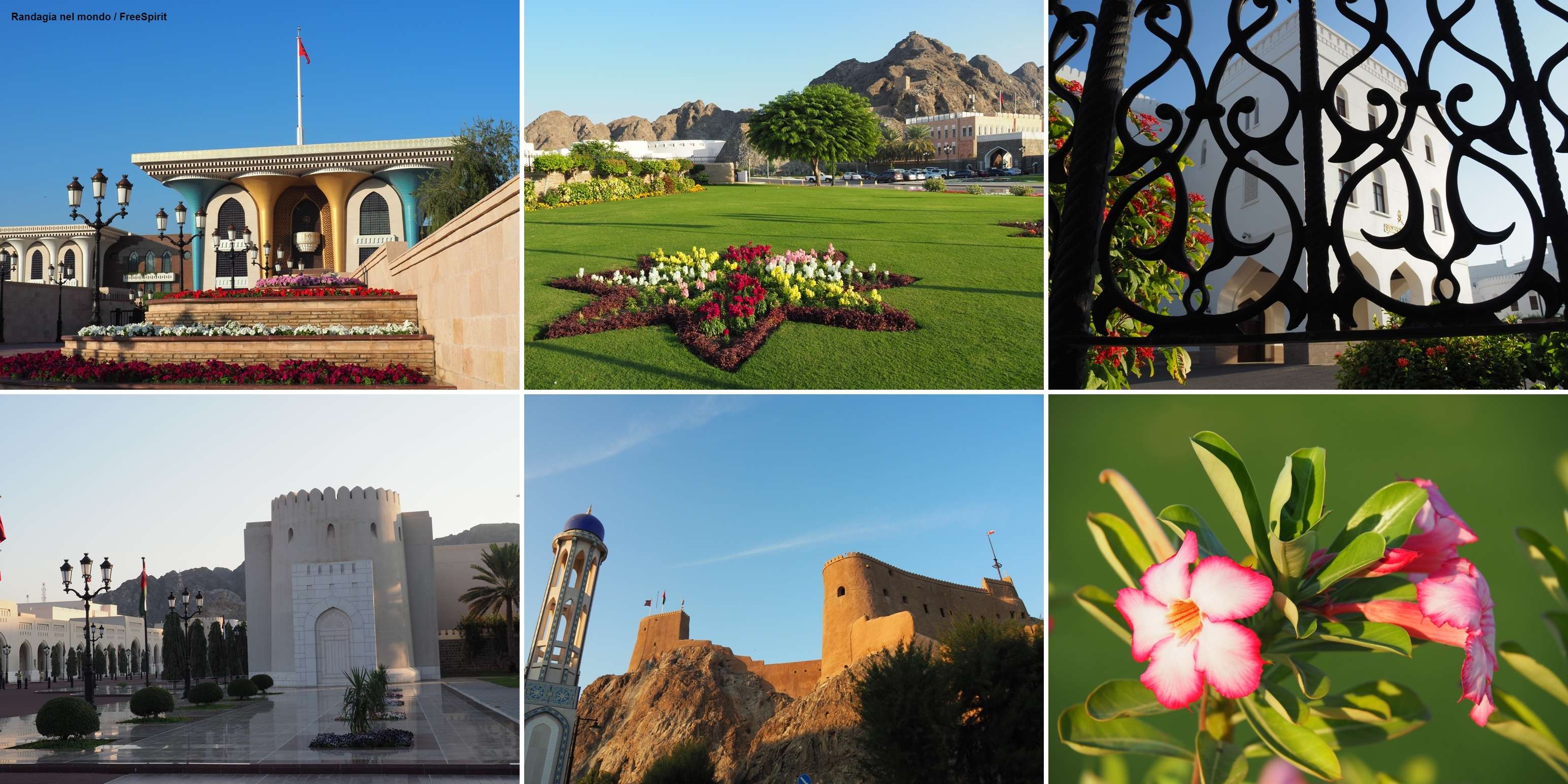
MUTTRAH FORT
The sign at the entrance states that it was originally an Omani fort, built in 1530, subsequently the Portuguese added the two towers and the crenellated wall in 1500. During the second part of the 4th century during the Al Busaid dynasty the wall was doubled, and other towers built.
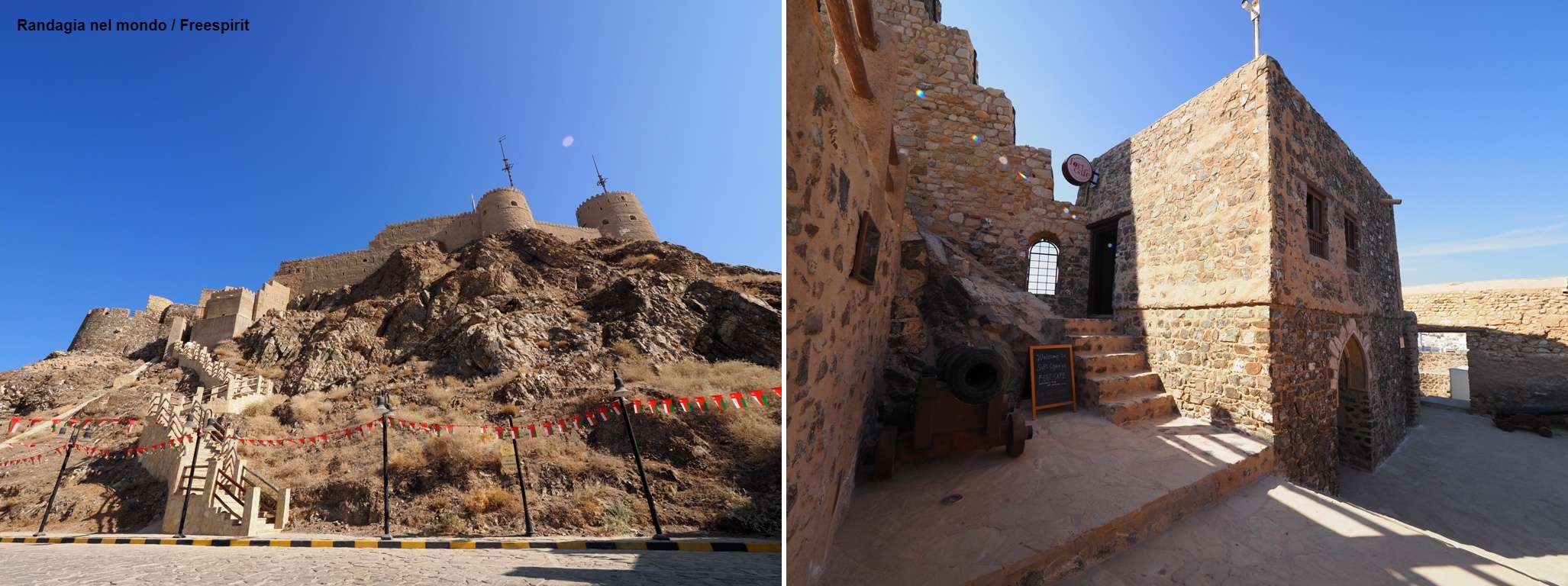
t dominates Muttrah Bay with its silhouette. It’s impossible not to notice it even at night, as it is illuminated in red, white and green, the colors of the Omani flag. It can be visited, cost 2 OMR. There is nothing particularly interesting to see, but it offers the opportunity to admire the beautiful Corniche from above.

